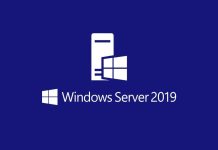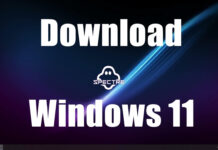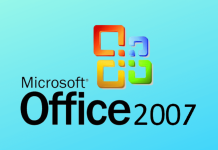Want to install macOS Mojave 10.14.1 on your Mac? MacOS Mojave was released in 2018 and is one of the most stable updates for older Macs. If you have an old Mac, you can install macOS Mojave for a stable experience without sacrificing features.
This article will guide you through download all the required macOS Mojave files and installing the update on your Mac. We will provide the link to the DMG file for Mac installation and the link to the ISO Image for Windows PC installation.
Download macOS Mojave 10.14.1
You can download the macOS Mojave 10.14.1 from the following links-
Download macOS Mojave 10.14 DMG
Download macOS Mojave 10.14 ISO Files
System Requirements for macOS Mojave 10.14.1
All the Macs are backward compatible, which means you can run the old versions of macOS even on the newest Mac without any problem. You can easily run macOS Mojave 10.14.1 on the following Macs-
- MacBook (Early 2015 or newer)
- MacBook Air (Mid 2012 or newer)
- MacBook Pro (Mid-2012 or newer)
- Mac Mini (Late 2012 or newer)
- iMac (Late 2012 or newer)
- iMac Pro (2017)
Note—Mac Pros released between mid-2010 and mid-2012 can run macOS Mojave 10.14.1 if they have a compatible Metal-capable graphics card. You can check this list to see which graphics cards support macOS Mojave.
Features of macOS Mojave 10.14.1
macOS Mojave was released by Apple back in 2018 and it came with a lot of features that were missing in High Sierra. Some of the features of macOS Mojave are:
1. Dark Mode
Mojave was the first macOS update to bring the dark mode to Mac. In the earlier version, it was compatible with in-built Apple apps like Messages, Mail, Maps, etc., but was enhanced for other software as well.
2. Dynamic Desktop
Along with dark mode, the Mojave update also comes with a Dynamic Desktop feature. This allows the desktop to be changed according to the specific time of day. During the day, the desktop will remain light, whereas, after sunset, it will automatically go dark.
3. Group FaceTime
One of the major changes to the macOS was the group FaceTime. With the Mojave update, Apple users were able to make group FaceTime calls. Apart from this, users can join or leave the call anytime they want to while the conversation is still active.
4. Revamped App Store
macOS Mojave brings a new look to the App Store. The new design has tabs on the left pane, which helps users find the app they are looking for. The Discover tab lists all the new apps on the App Store, while other tabs were there to help find apps for specific purposes.
Also, more new apps came to the Mac’s App Store with this update, including apps like Microsoft Office, Lightroom CC, and more.
5. Updates to Finder and Desktop
Icons and files on the desktop can be organized and stacked into groups to create a clean desktop. The Finder has a new Gallery View and Preview Pane. Other changes, such as Quick Actions, Quick Look, etc., also came to the Finder.
6. New Emoji Characters
macOS Mojave (specifically macOS Mojave 10.14.1) brings over 70 new emoji characters to the Mac. This includes characters with curly hair, gray hair, bald face, animals, and more.
7. Continuity Camera
Probably one of the biggest features to be added to macOS Mojave was the continuity camera. Photos that you capture on your iPhone or iPad will appear on your Mac. This can be useful if you want to upload a photo on a document or you want to send it to someone.
8. Developer Framework
Apple, with macOS Mojave, introduced new developer frameworks. This made it easier for developers to port the apps already available for the iOS to the macOS. As a developer, it will be easier to port iOS apps to macOS, whereas, users will be getting more apps compatible with macOS.
9. Markup Tools
Markup tools are also added to Quick Look, Finder, and Screenshots. This makes it easier for users to annotate their photos without using any third-party app.
How to Install macOS Mojave 10.14.1?
Once you have downloaded the macOS Mojave from the above link, you can proceed with the steps to install it on your Mac. But before you go ahead, ensure you take a backup of all your apps and files as the process will delete all of your data.
- Double-click on the DMG file of the macOS and follow the on-screen instructions to install the Mojave installer on your system.
- Now, insert a USB Drive on your Mac (with at least 8GB storage).
- Open Spotlight Search, type Disk Utilities, and open it.
- From the left pane, click on your USB drive and then on Erase.
- On the pop-up window, type the Name as MyVolume.
- Also, set the Format to Mac OS Extended (Journaled).
- Click on Erase to format the drive.
- After the drive is erased, click on Done and close Disk Utilities.
- Now, press Command + Spacebar, type Terminal, and press Return to launch it.
- Execute the following command-
-
sudo /Applications/Install\ macOS\ Mojave.app/Contents/Resources/createinstallmedia --volume /Volumes/MyVolume
-
- You will be asked to enter your system’s password; enter the password and press Return.
- Next, press Y and then press Return.
- Wait till the process ends and this will create a macOS Mojave bootable USB drive.
- After this, unplug the USB drive and shut down your system.
- Now, press the Power button to turn on the system and immediately press and hold the Option button.
- When you see some menu on your screen, release the Option button and insert the bootable USB drive in your Mac.
- After this, you will see the macOS Mojave Installer on the screen; select it and press Return.
- Next, select the Language from the menu and click on Next.
- Now, click on Disk Utility and click on Continue.
- Click on View at the top left corner and then on Show All Devices.
- From the left sidebar, select your internal SSD/HDD and click on Erase.
- Click on the drop-down menu next to Format and select APFS.
- Click on Erase to delete the old macOS installation.
- After the process, quit Disk Utilities.
- On the next screen, click on Install macOS and then click Continue.
- Click on Continue again and follow the on-screen instructions to install macOS Mojave 10.14.1.



